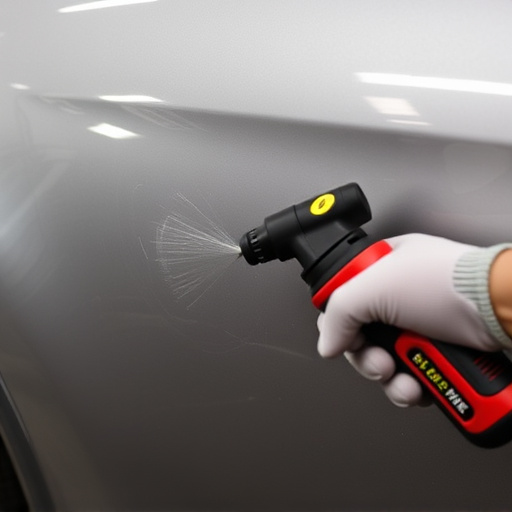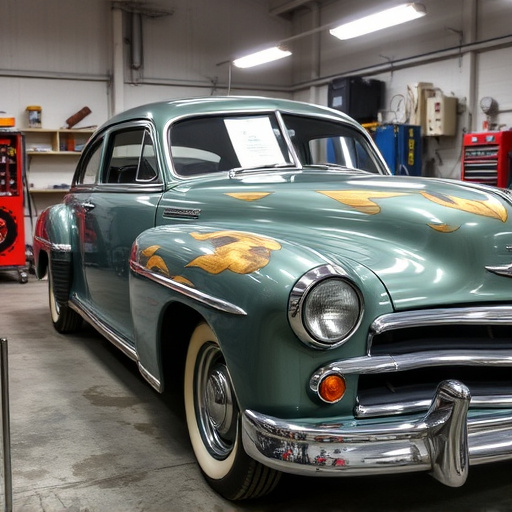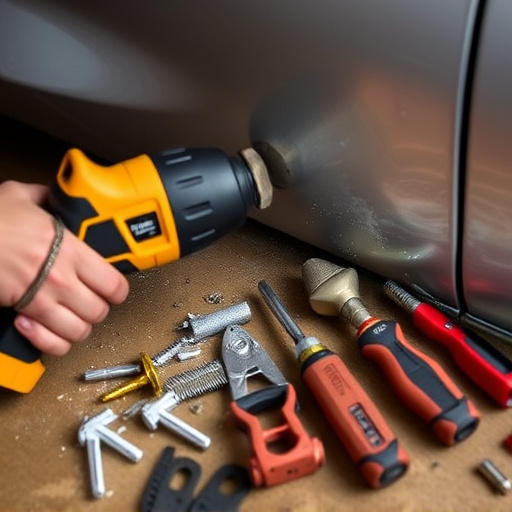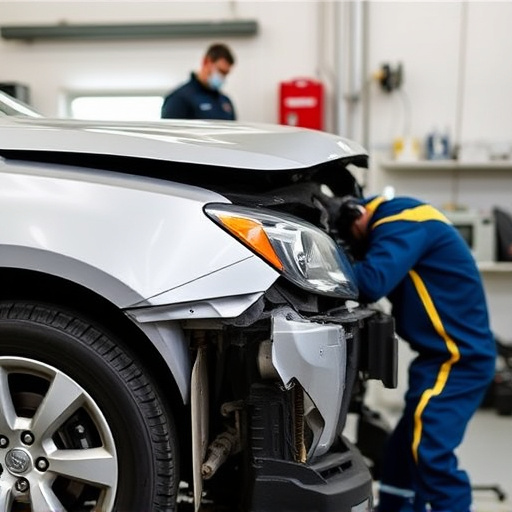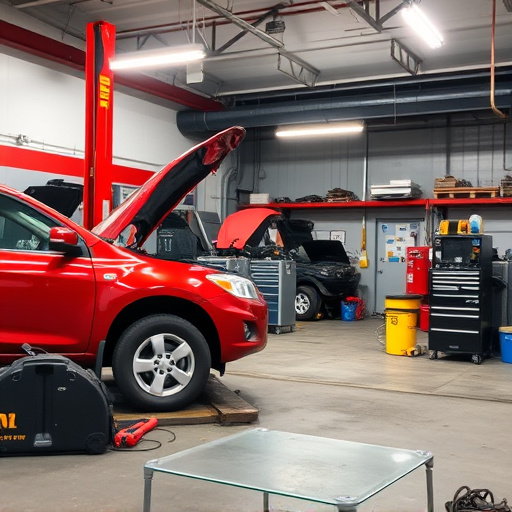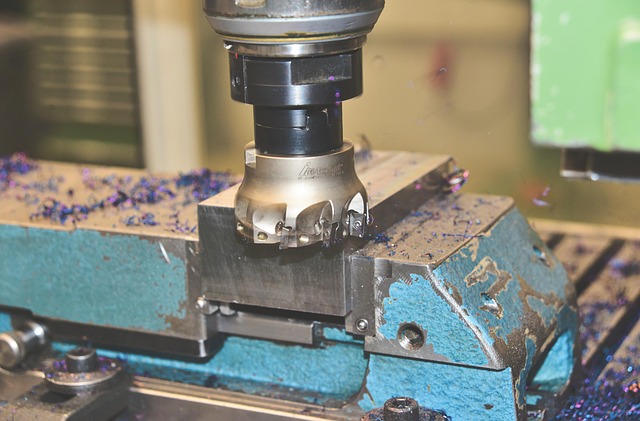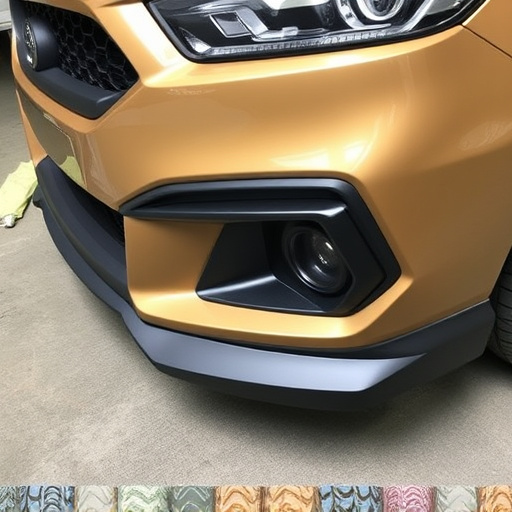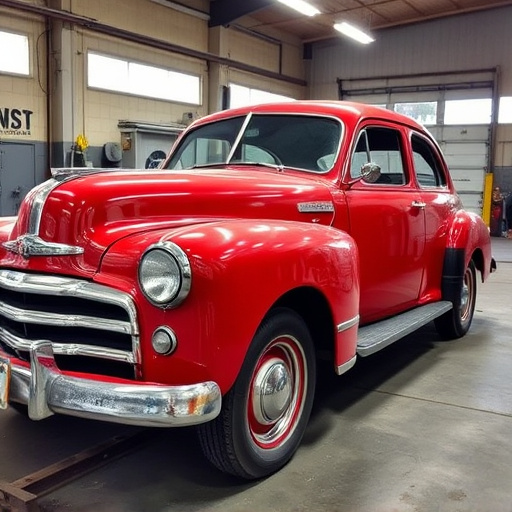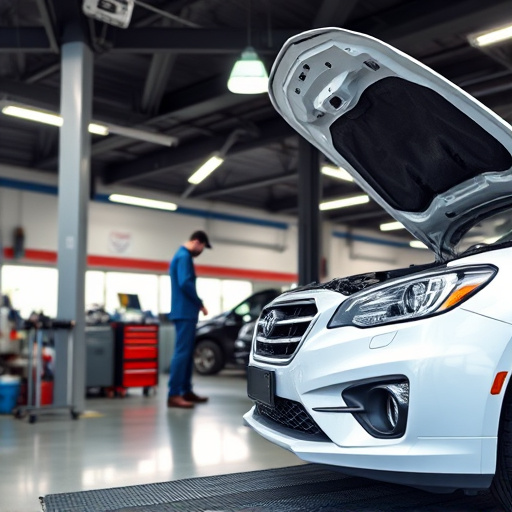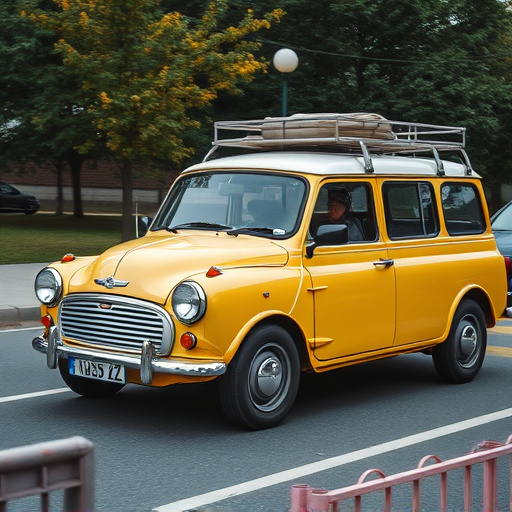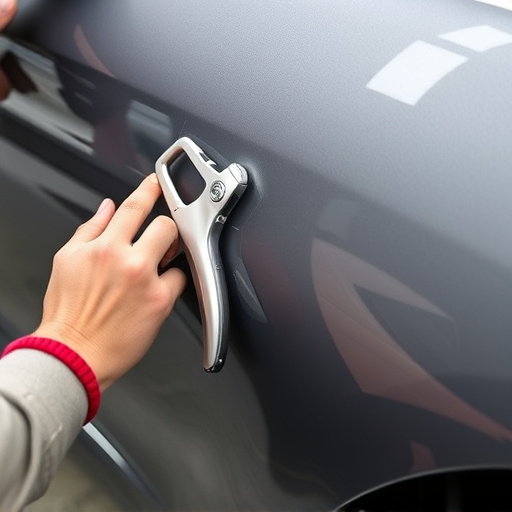Driveshaft wobble post-vehicle impact indicates an abnormal vibration caused by misaligned or damaged drivetrain parts, signaling potential structural issues and safety hazards. Prompt driveshaft collision repair is crucial for both vehicular performance and safety, ensuring proper alignment, balance, and structural integrity after a collision. Skilled technicians use advanced techniques like computer-aided measurements and precision machining to restore optimal driving conditions through meticulous inspection and diagnosis.
Driveshaft wobble after vehicle impacts is a concerning issue that requires immediate attention. Understanding the basic mechanics behind this phenomenon is crucial for effective collision repair. This article delves into the common causes of post-impact driveshaft wobble and explores strategic repair strategies to ensure safe and reliable vehicle operation. By addressing these aspects, automotive professionals can effectively manage driveshaft collision repair, minimizing potential safety risks and enhancing customer satisfaction.
- Understanding Driveshaft Wobble: The Basics
- Common Causes of Post-Impact Wobble
- Effective Collision Repair Strategies for Driveshafts
Understanding Driveshaft Wobble: The Basics

Driveshaft wobble is a concerning issue that can arise after a vehicle has been involved in an impact, such as a collision or accident. It refers to an abnormal vibration or oscillation in the driveshaft, which is responsible for transmitting power from the engine to the wheels. This phenomenon is not only uncomfortable but can also indicate potential structural damage and safety hazards if left unaddressed.
The basic cause of driveshaft wobble lies in the misalignment or damage to the components within the system. This includes issues like bent or damaged shafts, loose connections, worn bearings, or imbalances. During a vehicle impact, these components might sustain stress or degradation, leading to irregular rotation and subsequent wobble. Automotive repair experts emphasize that timely driveshaft collision repair is crucial for both vehicular performance and safety, ensuring that your vehicle returns to its optimal condition after such incidents.
Common Causes of Post-Impact Wobble

Driveshaft wobble after a vehicle impact is a common issue that requires prompt attention from experienced mechanics. Several factors can contribute to this problem. One of the primary causes is structural damage to the drivetrain, including the driveshaft itself, which can bend or twist due to the force of the collision. This misalignment disrupts the smooth rotation necessary for optimal vehicle performance.
Another common cause is the impact’s effect on connected components like universal joints and CV joints. These parts play a crucial role in transmitting power from the engine to the wheels. A severe collision can loosen or damage these connections, leading to wobble. Additionally, shock absorbers and suspension systems are integral to handling impacts; when they’re compromised, it can result in driveshaft wobble, as the vehicle struggles to maintain stability post-collision. These issues often necessitate specialized driveshaft collision repair at a reputable auto collision center or automotive body shop to ensure safe and efficient driving conditions.
Effective Collision Repair Strategies for Driveshafts

After a vehicle experiences an impact, driveshaft wobble can occur due to various internal damages. Effective collision repair strategies for driveshafts involve meticulous inspection and diagnosis. Skilled technicians use specialized tools to assess the extent of the damage, identifying cracks, breaks, or misalignments that could compromise the driveshaft’s integrity. Repairs may range from simple straightening and realignment to complete replacement, depending on the severity of car damage repair.
Modern vehicle body shops employ advanced techniques, such as computer-aided measurements and precision machining, to ensure accurate restoration. These methods are crucial in mitigating potential long-term issues that could arise from driveshaft collision repair. Proper alignment and balance are critical to prevent future wobble, ensuring a seamless driving experience and extending the lifespan of both the driveshaft and the vehicle as a whole. Auto detailing is often the final step, enhancing aesthetics but also verifying the structural integrity of the repaired driveshaft.
Driveshaft wobble after vehicle impacts is a complex issue with various contributing factors. By understanding the common causes, such as damaged u-joints, loose or fractured components, and misaligned shafts, effective collision repair strategies can be employed to ensure safe and reliable driveshaft operation. Proper diagnosis and specialized driveshaft collision repair techniques are crucial in mitigating these issues, thereby enhancing vehicle safety and performance.
